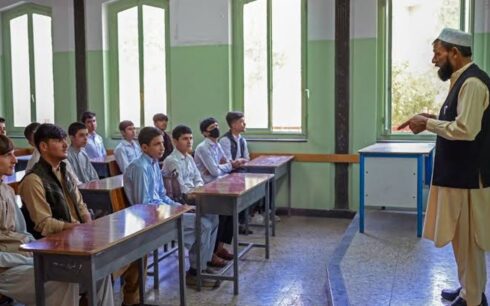Extreme weather events displaced at least 38,000 people in Afghanistan during the first six months of 2024, surpassing the total number of displacements recorded for the entire year of 2023, Save the Children reported. About half of the displaced individuals are children.
An analysis by the Internal Displacement Monitoring Centre (IDMC) revealed that displacements due to droughts, extreme temperatures, floods, landslides, avalanches, and storms in the first half of 2024 exceeded the 37,076 displacements reported for all of 2023.
While the IDMC does not provide specific data on children displaced within a given year, it notes that children account for half of those displaced in Afghanistan. As of the end of 2023, Afghanistan had the highest number of children displaced by climate disasters globally, with 747,094 affected.
Historically, conflict has been the primary cause of displacement in Afghanistan. However, since 2022, climate disasters have become the leading driver, with drought being the main factor, according to the United Nations. One in seven Afghans faces long-term displacement, the highest number in South Asia and the second highest globally.
Afghanistan ranks as the sixth most vulnerable country to climate change impacts but is among the least equipped to adapt and cope. More than one-third of Afghans face crisis levels of hunger, primarily due to climate shocks and high food prices. Severe or catastrophic drought conditions affect 25 of Afghanistan’s 34 provinces, impacting over half the population, according to the United Nations.
Kandahar province in the south has been severely affected by drought, prompting many residents to relocate after hundreds of wells and other water sources dried up. In one village where Save the Children operates, approximately half of all families left due to a drastic reduction in clean water, forcing those who remained to seek work in other districts. Children in this village often walked for hours to fetch water from a waterhole also used by animals, leading to disease outbreaks.
Raouf, 13, lives with his family of six in an area frequently plagued by droughts. His village faces severe water shortages, forcing Raouf and his friends to make multiple trips daily to a reservoir about 300 meters away for water, often causing them to be late for school. Save the Children has constructed a new water system in the village using deep boreholes powered by solar panels, allowing families to return to their homes and children to spend less time fetching water.
“Animals drank from the same water that we used to consume. By the time we brought it back, it would become warm, and that water caused us to become ill,” Raouf said. “I’m very pleased with the new water tanker system. Before, we had to fetch water by hand in gallons from distant places, and the water quality was poor. Now, we have clean drinking water that doesn’t make us ill.”
Research consistently shows that girls and women are disproportionately impacted by climate disasters compared to men, especially those in vulnerable circumstances. A 2019 UNDP report found that globally, at least 60 percent of deaths from extreme climate events over the past 20 years were women and girls.
Arshad Malik, Country Director for Save the Children in Afghanistan, said, “The climate crisis is fueling the humanitarian crisis in Afghanistan. It is forcing people from their homes, destroying water sources, and preventing children from going to school. It is changing children’s lives. Compared to 60-year-olds, newborns in Afghanistan will confront 5.3 times more drought in their lifetimes.”
“Afghanistan is experiencing extreme weather events with alarming frequency. This year alone, thousands of people have been displaced by both drought and floods. The climate crisis is destroying Afghan lives and livelihoods,” Malik added. “Adapting to and preparing for the impacts of climate change needs to be a priority, even at a time when funding is massively stretched. It’s been three years since direct international aid, which was equivalent to 40 percent of the GDP and financed up to 80 percent of public expenditure, was reduced after the de facto authorities regained control. Humanitarian agencies cannot be expected to plug this gap alone.”
Save the Children has supported communities and protected children’s rights in Afghanistan since 1976, including during periods of conflict and natural disasters. In response to the floods in Baghlan, the organization reached 25,190 people, including 13,670 children. Save the Children operates programs in nine provinces in Afghanistan and works with partners in an additional seven provinces.





